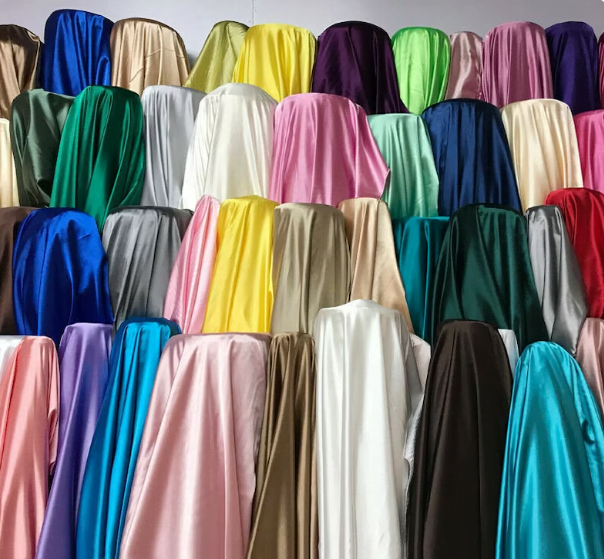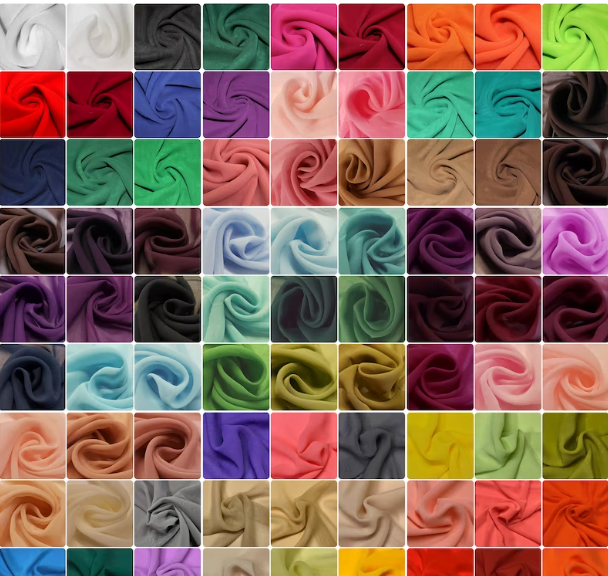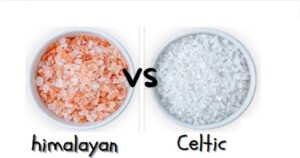Polyester and satin, though seemingly worlds apart in texture and composition, share a common thread in the intricate tapestry of textile history. Polyester, born of scientific ingenuity and industrial progress, is a synthetic marvel, engineered to mimic the luxurious feel of natural fibers while offering enhanced durability and affordability. Its creation marked a turning point in the fashion and textile industries, ushering in an era of accessible elegance.
Satin, on the other hand, traces its roots to ancient civilizations, a textile cherished for its opulent sheen and supple drape. Crafted from natural silk fibers, satin exudes a timeless allure that has adorned the elite and adorned ceremonial robes for centuries. Together, these two fabrics embody a juxtaposition of innovation and tradition, weaving a narrative that speaks to the evolving tastes and needs of humanity across epochs.
All about Satin fabric
Indeed, satin is a smooth and glossy fabric that owes its distinctive texture to a specialized weaving technique. Unlike other textiles, satin is created through a weave where the warp threads are caught and looped by the weft only at specific intervals. This deliberate interlacing creates a surface that is notably lustrous and luxuriously smooth to the touch.
The result is a fabric that radiates elegance and opulence, making satin a perennial favorite for special occasions and high-end fashion. Its unique construction grants it a distinct place in the world of textiles, a testament to the craftsmanship and artistry that goes into its production.

satin fabric
Basic Characteristics of satin
Satin stands apart as a sumptuously sleek and gleaming fabric, owing its characteristic texture to a specialized weaving method. Unlike its textile counterparts, satin emerges from a weave where the warp threads are skillfully caught and looped by the weft only at specific intervals.
This intentional intertwining yields a surface that exudes opulence and is delightfully smooth to the touch. The outcome is a textile that emanates sophistication and luxury, solidifying satin’s enduring popularity for special occasions and high-end fashion. Its distinctive construction grants it a unique position in the realm of textiles, a tribute to the craftsmanship and artistry embedded in its production.
- Lustrous Appearance: Satin weaves yield a glossy, velvety front surface, while the back side appears matte, owing to the precise arrangement of warp and weft threads. This imparts a luxurious sheen to the fabric.
- Elegant Draping: Thanks to the densely packed fibers and the supple nature of the material, satin fabrics possess an exquisite drape, making them an excellent choice for evening gowns and curtains. The fabric drapes gracefully, enhancing its overall aesthetic appeal.
- High Durability: Satin is known for its robustness. It is crafted using long filament fibers that are tightly woven, resulting in a fabric that is more resilient compared to many plain weave counterparts. This durability ensures that satin garments stand the test of time.
- Material made from: It can be made from various materials including silk, acetate, nylon, and polyester. True satin is made from silk, but synthetic satin is usually made from polyester.
- Glossy : It is known for its high-gloss finish and ultra-smooth surface. This is due to the weaving technique used which creates a surface with a reflective quality.
- Shiny: Known for its high shine and luxurious appearance.
- Breathable: on the material (silk or synthetic), it can vary in breathability. Silk satin is more breathable than synthetic satin.
- Cooling Feeling: Depending on the material, it can be quite
- comfortable, especially silk satin which is known for its smooth, cool feel.
- While satin can be delicate, it’s generally a durable fabric. However, silk satin may require more care.
- Natural satin, especially silk satin, tends to be more expensive due to the labor-intensive process of producing silk.
- It tends to be less wrinkle-resistant, especially silk satin.
- Often used in special occasion clothing like wedding dresses, evening gowns, lingerie, and accessories like scarves. It’s also used for luxury bedding and interior decor.
- Care instructions depend on the material. Silk satin is more delicate and typically requires more gentle handling and may need to be dry cleaned.
- Resistant to Wrinkles: Satin exhibits a lower tendency to wrinkle in
- comparison to other fabrics, with thicker satins showing even greater resistance to creasing.
8 Different types of satin
1. Slipper Satin :This tightly woven, medium-weight fabric, is use to make accessories, Shawls, footwear, and garments, weighty satin with a pronounced sheen.
2. Messaline. This type of satin is exceptionally lightweight, boasting a brilliant sheen, and is typically woven from either rayon or silk.
3. Polysatin: as the name suggests, is a type of satin fabric that is woven from polyester threads. Polyester is a synthetic fiber known for its durability, wrinkle resistance, and ease of care. When used in satin weaving, it imparts many of the desirable characteristics of satin fabric.
4. Antique satin: Is crafted by employing irregularly spun yarns for the weft threads, and it is skillfully woven using either a 5-harness or 8-harness technique..
5. Charmeuse: Is derived from the French word “charmer,” is an incredibly lightweight fabric known for its graceful drape. It embodies the classic attributes of satin, featuring a glossy front surface and a subdued, matte reverse side.
6. Duchess satin: This satin is a weighty material, known for its stiffness and subdued shine in contrast to typical satin. It is commonly dyed in solid colors and favored for dressmaking.
7. Crepe back satin: This satin is a versatile fabric with two distinct sides, one featuring a glossy, satin finish, while the other boasts a textured crepe surface.
8. Baronet satin: This type of satin employs rayon in the warp threads and cotton in the weft threads, resulting in a fabric renowned for its exceptional luster.

Key Considerations when working with Satin
- Prone to snags: Due to the nature of its weave, satin is susceptible to snagging, resulting in unsightly imperfections.
- Challenging to handle: Its smooth and slippery texture can make working with satin a demanding task during the sewing process.
12 Important steps on how to care for satin
The care and washing instructions for satin primarily depend on the type of material. Synthetic fiber satins and cotton-based sateens can usually be laundered at home, whereas silk-based satin requires professional dry cleaning. When washing satin items at home, it’s important to adhere to these general guidelines:
Taking care of satin fabric requires a gentle touch and some special attention. Satin is a delicate material known for its smooth, glossy surface. Here are some tips to help you maintain and preserve satin fabric:
- Hand Washing or Delicate Cycle: If possible, hand wash satin garments in cool water using a mild detergent. If you’re using a washing machine, set it to a delicate or gentle cycle with cold water.
- Gently wash by hand or use the delicate cycle in cold water with a mild detergent.
- Avoid hanging or wringing the satin, as it is prone to losing its shape.
- Refrain from using a dryer. Instead, lay the item flat to air dry on a clean towel.
- Avoid Agitation: When washing, don’t wring or twist the fabric. Gently agitate it in the water, and then rinse thoroughly.
- Use a Mild Detergent: Opt for a gentle, pH-neutral detergent. Avoid bleach or harsh chemicals, as they can damage the fibers.
- Cold Water Rinse: Rinse the fabric in cold water to remove any remaining detergent.
- Pat Dry: Lay the fabric flat on a clean towel and gently pat it dry. Do not rub, as this can cause friction and damage the fibers.
- Avoid Direct Sunlight: Avoid drying satin in direct sunlight, as this can cause fading and damage the fibers. Instead, allow it to air dry in a shaded area.
- Iron with Low Heat: If ironing is necessary, use a low heat setting and place a pressing cloth (like a clean cotton pillowcase or muslin) between the iron and the fabric to prevent direct contact. Iron on the reverse side or use a clean, white cloth as a barrier.
- Avoid High Heat: Never use high heat when washing, drying, or ironing satin. High heat can cause the fibers to weaken and lose their luster.
- Store Carefully: Store satin garments in a cool, dry place away from direct sunlight. Avoid folding them tightly to prevent creasing. Consider hanging them or gently rolling them in tissue paper.
- Avoid Contact with Rough Surfaces: Be cautious with sharp or rough surfaces, as they can snag or tear satin.
- Spot Cleaning: If a stain occurs, use a mild stain remover or spot clean with a gentle detergent. Test it on an inconspicuous area first to ensure it won’t damage the fabric.
- Professional Cleaning: For valuable or heavily-soiled satin items, consider professional dry cleaning. Be sure to choose a reputable cleaner experienced with delicate fabrics.
Remember, always refer to the care label on the garment for specific instructions, as different types of satin (such as silk satin, polyester satin, etc.) may have slightly different care requirements.
Key points about Satin bed linen
Using satin bed linen in winter can be a delightful choice for several reasons. While satin may not have the same insulating properties as natural fibers like cotton or flannel, it still offers benefits:
- Luxurious Comfort: Satin is exceptionally smooth and soft against the skin. It provides a comfortable and indulgent feel that many find appealing, especially during the colder months.
- Maintains Body Heat: While not as effective as heavier fabrics, satin can still help retain some body heat. This can create a cozy sleeping environment, particularly when combined with additional layers like blankets or duvets.
- Reduced Friction: Satin’s smooth surface reduces friction against your skin and hair, which can be especially beneficial if you tend to move around a lot during sleep. It helps prevent hair tangles and skin irritation.
- Aesthetic Appeal: Satin’s glossy finish can add an elegant touch to your bedroom decor. It brings a sense of luxury and sophistication that can be particularly enjoyable during the winter months.
- Easy to Layer: Satin sheets can be easily layered with other bedding, like blankets or duvets, to provide extra warmth when needed. This versatility allows you to adjust your bedding according to your comfort level.
- Easy Maintenance: Satin is typically easy to care for. Follow the care instructions provided by the manufacturer to keep your bedding looking and feeling its best.
While satin may not be the warmest option for winter, it can certainly contribute to a cozy and elegant sleeping environment when used thoughtfully in combination with other bedding materials.
What is Polyester?
Polyester is a man-made fiber derived from a polymer known as polyethylene terephthalate (PET). It stands as one of the most extensively utilized synthetic fibers globally, cherished for its robustness, adaptability, and cost-effectiveness.
Blending polyester fibers with natural counterparts in fabric production creates a material that combines the strengths of both. Cotton-polyester blends offer robustness, resistance to wrinkles and tears, and minimize shrinkage. In contrast, synthetic fibers like polyester exhibit superior water, wind, and environmental durability compared to those derived from plants. However, they have lower fire resistance and can liquefy when exposed to flames.
Polyester vs Satin fabric : Which fabric is more resistant to stains?
When comparing polyester and satin fabrics for stain resistance, here’s what you need to know:
Polyester Fabric:
- Stain Resistance: Polyester is a synthetic fabric known for its high resistance to stains. The fibers are less absorbent than natural fibers, meaning liquids and other staining substances are less likely to penetrate the fabric. This makes polyester relatively easy to clean and maintain.
- Cleaning: Polyester can often be cleaned with regular laundry detergent, and most stains can be removed without much difficulty.
Satin Fabric:
- Stain Resistance: Satin refers to a weave rather than a specific material, so its stain resistance can vary depending on the fiber used to make it. If satin is made from polyester, it will inherit polyester’s stain-resistant properties. However, if satin is made from natural fibers like silk or cotton, it will be more prone to staining due to the absorbent nature of those materials.
- Cleaning: Satin can be delicate, especially if made from natural fibers. Stains on satin may require special care, such as gentle hand washing or dry cleaning, to avoid damaging the fabric.
Polyester is generally more stain-resistant than satin, particularly when satin is made from natural fibers. Satin made from polyester will have better stain resistance but may still require more careful cleaning due to the delicate weave. If stain resistance is a priority, polyester is the better choice overall.
How comfortable are polyester and satin for different weather conditions?
Polyester and satin are both popular fabrics, but they have different properties that affect their comfort in various weather conditions. Here’s a comparison:
Polyester
- Warm Weather: Polyester is a synthetic fabric that doesn’t breathe well, which means it can trap heat and moisture against your skin. This makes it less comfortable in hot, humid conditions as it may cause sweating and overheating. However, some polyester fabrics are engineered to be moisture-wicking, which can make them more suitable for warm weather activities like sports.
- Cold Weather: Polyester is more comfortable in cooler weather as it has good insulation properties and retains body heat. It’s often used in layering pieces and outerwear. Polyester dries quickly, so if it gets wet, it won’t stay damp for long, which is an advantage in cold weather.
Satin
- Warm Weather: Satin is a weave rather than a fiber, so its comfort level depends on the material it’s made from (which can be silk, polyester, acetate, etc.). Satin made from natural fibers like silk can be more breathable and cooler to wear in warm weather. However, satin made from synthetic fibers like polyester may not be as breathable and can feel hot and sticky.
- Cold Weather: Satin, particularly when made from synthetic fibers, can be less warm than other fabrics since it is generally lightweight and doesn’t have much insulating ability. However, it does have a smooth, luxurious feel that some people find comfortable against the skin in cooler weather.
Overall Comfort
- Polyester is generally better suited for cooler weather or when used in sportswear with moisture-wicking properties.
- Satin (depending on the fiber content) can be more versatile but might be less comfortable in extremely hot or cold weather due to its lightweight nature and potential lack of breathability.
Your choice between polyester and satin will depend on the specific weather conditions and personal comfort preferences. If you’re looking for something more breathable for hot weather, natural fibers or moisture-wicking polyester might be better, whereas for cooler weather, polyester is usually more insulating. Satin offers a smooth texture and can be comfortable in moderate temperatures but might not be ideal for extreme weather conditions.
6 Essential Qualities of Polyester
Polyester has a number of desirable qualities that make it popular in the textile industry. These include:
- Durability: Polyester is known for being strong and resilient. It can withstand a fair amount of wear and tear.
- Wrinkle Resistance: It tends to be less prone to wrinkles compared to natural fibers like cotton.
- Quick Drying: It has low absorbency, which means it doesn’t hold onto moisture for long, making it quick to dry.
- Colorfastness: Polyester fibers can hold dye well, resulting in vibrant and long-lasting colors.
- Resistance to Mildew and Moths: Unlike natural fibers, polyester is not prone to being damaged by mildew or moth larvae.
- Affordability: It is generally less expensive to produce than natural fibers, making it an economical choice for many applications.
Polyester is commonly used in a wide range of products, including clothing, bedding, curtains, upholstery, and various industrial applications like ropes, seat belts, and more. It is also used in the production of bottles, films, and other packaging materials.

It’s worth noting that while polyester has many advantages, it’s not without its downsides. Some people find it less breathable and comfortable compared to natural fibers like cotton. Additionally, its production involves the use of non-renewable resources and can contribute to environmental issues if not managed responsibly. There are also efforts to develop more sustainable forms of polyester, including recycled polyester made from used plastic bottles.
Pros and Cons of Polyester Fabric
Polyester is a popular synthetic fabric used in a wide range of applications, from clothing to home furnishings. Here are the pros and cons of polyester fabric:
Pros of Polyester Fabric:
- Durability:
- Polyester is highly durable and resistant to wear and tear, making it suitable for everyday use.
- It resists shrinking, stretching, and wrinkling, maintaining its shape over time.
- Moisture-Wicking:
- Polyester has good moisture-wicking properties, making it a popular choice for athletic and outdoor wear. It helps to keep the wearer dry by pulling moisture away from the skin.
- Quick-Drying:
- Polyester dries quickly, which is beneficial for activewear and outdoor gear.
- Lightweight:
- The fabric is lightweight, making it comfortable for long-term wear.
- Color Retention:
- Polyester holds dye well, resulting in vibrant, long-lasting colors that don’t fade easily.
- Cost-Effective:
- Generally, polyester is more affordable than natural fabrics like cotton or wool.
- Low Maintenance:
- Polyester is easy to care for, often requiring only simple washing and drying without the need for ironing.
Cons of Polyester Fabric:
- Breathability:
- Polyester is not as breathable as natural fabrics, which can make it less comfortable in hot and humid conditions. It may trap heat and moisture close to the skin.
- Environmental Impact:
- Being a synthetic material, polyester is derived from petroleum, making its production energy-intensive and less eco-friendly. Additionally, polyester is not biodegradable, contributing to environmental pollution.
- Static and Pilling:
- Polyester is prone to static electricity and can cause discomfort or clinginess. It can also pill over time, especially when exposed to friction.
- Odor Retention:
- Polyester can retain odors, especially if worn during activities that cause sweating. The fabric can be difficult to deodorize even after washing.
- Comfort:
- Some people find polyester less comfortable against the skin compared to natural fabrics like cotton or silk. It can feel rough or stiff, especially in lower-quality versions.
- Limited Temperature Regulation:
- Polyester does not regulate temperature well, meaning it may not keep you warm in cold weather or cool in hot weather as effectively as other fabrics.
- Chemical Sensitivity:
- People with sensitive skin may experience irritation or allergic reactions when wearing polyester due to the chemicals used in its production.
Polyester fabric is a versatile and durable option, but it has some trade-offs in terms of comfort, environmental impact, and breathability.
Is Polyester Carcinogen?
Polyester itself is not classified as a carcinogen, meaning it is not generally considered to cause cancer when used in everyday items like clothing, bedding, and upholstery. However, there are concerns related to the chemicals used in the production of polyester and its potential impacts on health.
Concerns and Studies Related to Polyester:
- Chemicals in Polyester Production:
- Polyester is made from polyethylene terephthalate (PET), which is a type of plastic derived from petroleum. The production process involves chemicals such as antimony, a heavy metal that is used as a catalyst.
- Antimony Exposure: There have been studies indicating that antimony can leach out of polyester, especially when the fabric is exposed to heat and moisture (e.g., sweat). Chronic exposure to antimony is a concern because it has been associated with respiratory and skin irritation, and there are studies suggesting it could be a possible carcinogen, although this link is not definitively established for typical consumer exposure levels.
- Microplastics:
- When polyester fabrics are washed, they can release microplastics into the water system. These microplastics have been found in oceans, rivers, and even in drinking water.
- Environmental and Health Concerns: The ingestion of microplastics by marine life, and potentially by humans through the food chain, is an area of active research. While the direct carcinogenic effects of microplastics are not well-established, there is concern about the long-term health impacts, including the potential for carrying other toxins into the body.
- Formaldehyde in Textile Finishing:
- Some polyester fabrics are treated with formaldehyde to make them wrinkle-resistant. Formaldehyde is a known human carcinogen when exposure is high enough.
- Exposure Risks: The levels of formaldehyde in finished textiles are generally low and regulated in many countries, but there is some concern about cumulative exposure, particularly for people with chemical sensitivities or in occupational settings.
Key Studies:
- Antimony in Polyester:
- A study published in the journal Environmental Health Perspectives (2009) measured the release of antimony from PET bottles and found that antimony can leach into liquids stored in polyester-based containers, particularly under conditions of heat and acidic pH. While this study focused on bottled water, it raised concerns about similar leaching from polyester textiles.
- The study suggested that more research is needed to understand the implications of antimony exposure from polyester fabrics.
- Microplastics and Health:
- A study published in Science Advances (2015) highlighted the pervasive presence of microplastics in marine environments, raising concerns about their impact on marine life and human health. The study did not directly link microplastics to cancer but emphasized the need for further research on the potential health risks associated with long-term exposure.
- Formaldehyde and Cancer Risk:
- The International Agency for Research on Cancer (IARC) has classified formaldehyde as a Group 1 carcinogen, which means it is carcinogenic to humans. Studies have shown that high levels of formaldehyde exposure can increase the risk of certain cancers, particularly nasopharyngeal cancer.
- However, the amounts of formaldehyde used in textiles are typically low, and regulatory agencies have set safety limits to minimize risks.
Resource
https://en.wikipedia.org/wiki/Polyester
https://www.masterclass.com/articles/what-is-satin-fabric
https://abavist.com/cotton-vs-polyester-fabric











